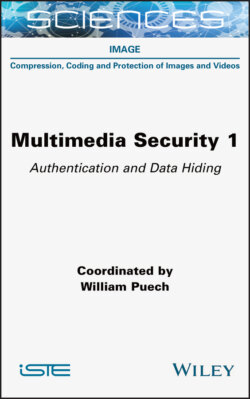Читать книгу Multimedia Security, Volume 1 - William Puech - Страница 34
1.4.2.1. Joint estimation of the sampled pixels and the demosaicing algorithm
ОглавлениеIn a pioneering paper on demosaicing analysis, Popescu and Farid (2005) propose to jointly estimate a linear model for the demosaicing algorithm and detect which pixels have been sampled in a given channel with an expectation-maximization (EM) algorithm. The demosaicing algorithm is estimated on pixels detected as interpolated (i.e. not sampled) as a linear combination of neighboring pixels in that channel. Sampled pixels are detected as pixels where the linear combination yields a result far from the correct value of the pixel. A pseudo-probability map of each pixel being sampled is then computed. Assuming the linear model is correct, sampled pixels will be correctly detected and there will be a strong 2-periodicity of the map, which can easily be seen as a peak in the Fourier transform of the image. However, in a region which has been altered, the estimated linear model will no longer be correct, either because the demosaicing estimation appears differently or because there are no demosaicing traces left at all. The 2-periodicity peak will thus locally disappear, and can be detected as potential evidence of a forgery. This method can then potentially classify the used demosaicing algorithm, or detect the absence of demosaicing artifacts, sign of manipulations such as blurring or inpainting to hide data on the image. To detect a change in the position of the Bayer matrix, (González Fernández et al. 2018) use a DCT instead of a Fourier transform. This simple modification enables one to directly visualize a change of position as a local change of signs at the observed peaks, instead of a harder-to-visualize phase difference. Unfortunately, while these detections were possible when Popescu’s article was first published, the demosaicing algorithms have become much more complex since then, both thanks to theoretical progress and increased computational power in cameras. Modern demosaicing algorithms process channels jointly and are strongly nonlinear, preventing an easy modelization of the demosaicing process.
